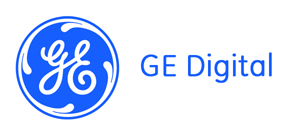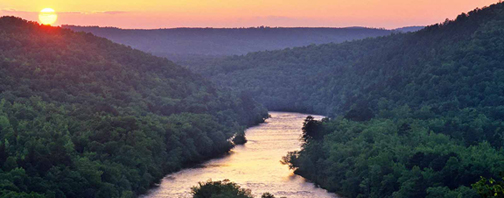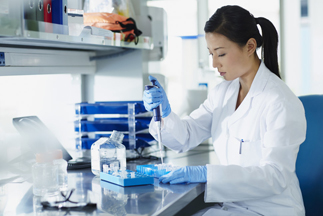As abundant as the clean water flowing from your tap may seem to be, it is a finite resource, and one too precious for anyone to waste. Over time, America’s need for water will only grow as our finite supplies are called upon to serve as many people as possible.
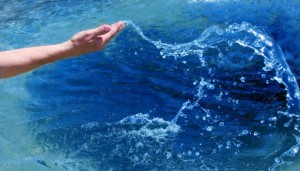 In 1965 when my parents had moved to the suburbs and my mom purchased her first dishwasher, the American population was 180 million. Today, that population is 325 million utilizing an old decaying Water Infrastructure.
In 1965 when my parents had moved to the suburbs and my mom purchased her first dishwasher, the American population was 180 million. Today, that population is 325 million utilizing an old decaying Water Infrastructure.
Let’s add saving water to our list of resolutions. The topic of water in America has increased during the last 5 years. Water conservation is “in” due to numerous water crises in the United States: a 5 year drought in California, a 2016 Northeast drought, flooding in the Midwest, flooding in South Carolina and North Carolina and various water problems throughout our nation.
Whether you are a municipal water supply professional, part of the water industry, organization or a concerned community member, there are easy resolutions we can make in 2017. If we each commit to small conservation efforts, then we can have large impacts for the future of our water supply. This year we have created 10 resolutions to put us one step further towards saving our water.
In 2017,
1. Become a Water Advocate
In your community, attempt to raise the consciousness of individuals in regard to America’s water infrastructure issues. As an advocate, continue to discuss water infrastructure repair with your First Selectman, Mayor, Congressmen and any other elected officials. President-elect Trump and Secretary Clinton, during their Presidential campaigns, discussed infrastructure repair. Let’s continue the discussion with our elected leaders and within your community.
2. Fix any dripping faucets
Leaking faucets that drip at 1 drop per second can waste up to 2,700 gallons of water each year. Make 2017 the year we put that number to better use.
3. Repair or replace leaky toilets
Older toilets can use three gallons of clean water with every flush, while newer toilets use as little as one gallon. This small change will help to reduce water waste in your household. It makes a difference. My water bill decreased after replacing 3 toilets.
4. Shorten shower time
Reducing your shower time from ten minutes to five minutes could save an average of about six gallons of water a day. If you lose track of time in the shower, then you can time yourself by how many songs play while you are in there. Try to get your shower time down to one or two songs. I have convinced my 19 year old daughter to reduce her shower time from 30 minutes to 20 minutes. Trust me it was not easy! She went off to college this past fall and my water bill was reduced by $30 per month. It does make a difference.
5. Turn off tap while washing hands, shaving and brushing teeth
Running the tap while you wash your hands, shave or brush your teeth can waste up to 5 gallons of water each day. In 2017, resolve to turn the faucet off while cleaning your pearly whites.
6. Run washing machine and dishwasher full. Set correct load levels.
It is easy to get in the habit of starting to clean clothes or dishes when there are only a few items. By waiting until you have a full load you could save up to 3,400 gallons of water a year. Holding off until you have a full load also has the added benefit of saving you 25% to 50% of the energy of small loads.
7. Switch to water-conserving showerheads, faucets, washers and toilets
This takes time and money for the homeowner. However, you can either pay now or pay later.
8. Reuse water
Reusing water at home is easier than you might think; all it takes is an awareness of how and when you are using water. For example, use the water from the dehumidifier to water your house plants. Consciously ask yourself where water can be used before you pour it down the drain.
9. Cut back on drinking bottled water
In 2016 bottled water outsold soda in America. Sadly, 5 out of 6 empty water bottles end up in the landfill. Get drinking water from a pitcher kept chilled in the refrigerator.
10. Recycle. Recycle, recycle
One of the best ways to conserve water is to buy recycled goods, as well as, recycling your own goods. It takes about 100 gallons of water to grow and process a single pound of cotton. By recycling, we can make that number stretch over multiple items.
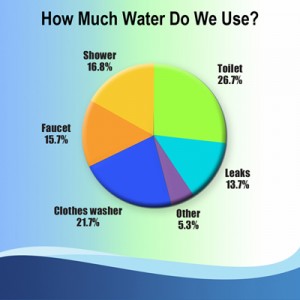
——————————————————————–
WATER NEWS
CES 2017: Samsung unveils four-in-one laundry system
Deccan Chronicle
Global Water Technologies releases annual shareholder letter
Water-short Singapore charts a course toward self-sufficiency
The Christian Science Monitor
Editorial: Why This Matters & What I Believe This Means For The US: DOE Secretary Rick Perry
Corridor News
Forecasting Las Vegas’ future, from new roads to pro sports
Las Vegas Sun
——————————————————————–
Let’s continue to increase our mindfulness in regard to water conservation in 2017. Happy New Year!


